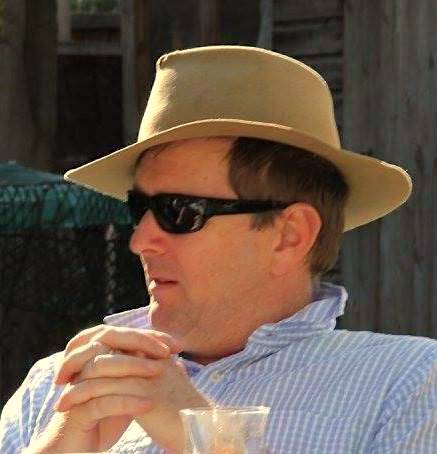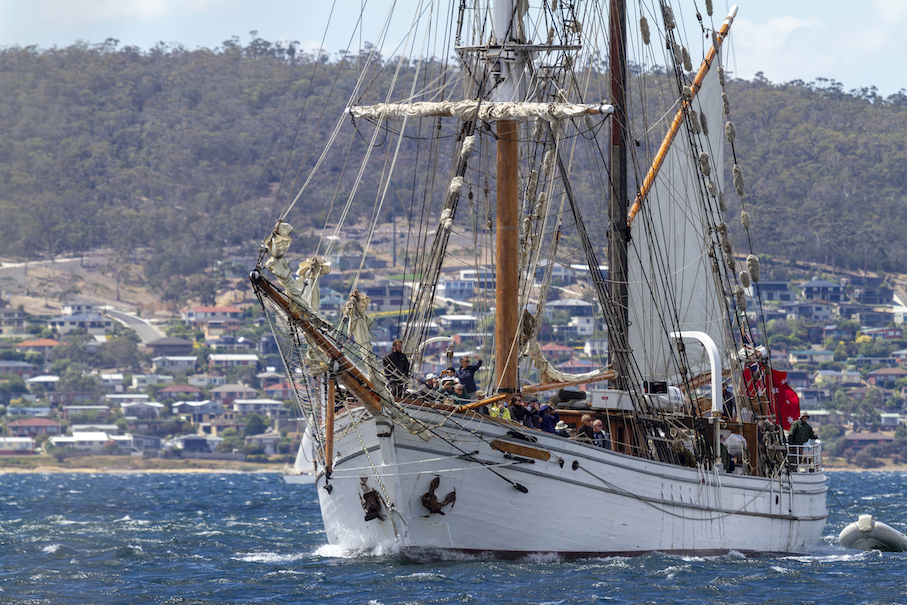 The MyState Bank Australian Wooden Boat Festival takes place in biannually in Hobart in early February. Chris Kelly (R) flew to Hobart from Sydney for the 2019 festival and sent us this report.
The MyState Bank Australian Wooden Boat Festival takes place in biannually in Hobart in early February. Chris Kelly (R) flew to Hobart from Sydney for the 2019 festival and sent us this report.
The 2019 MyState Bank Australian Wooden Boat Festival, which took place in Hobart over the weekend of 8‑11 February, has concluded. Set in and around Hobart’s picturesque historical waterfront, the festival is a celebration of wooden boats and their heritage and regularly attracts large crowds to the capital city of Australia’s island state. This year’s festival was no different; it’s estimated more than 200,000 people attended, including visitors from China, Europe and the United States.
More than 500 wooden boats – typically selected for the quality of their craftsmanship and design – were gathered in and around Hobarts’ docks and available for viewing and, in some cases, inspection. Various tall ships – resident and otherwise – were present, took part in the festivities and were tied up and available for inspection and cruises at handy points around the waterfront. The Australian navy even transported down and unloaded for display the magnificent Mistral II, a 64′ wooden gaff schooner built in Sydney in 1922; she will be restored and operated for young Australians by the Windeward Bound Trust, having been donated by the family of the late Ron Burton.

Ian Johnston founder of the AWBF, collects stragglers and a few pirates in his self built boat Tinderbox in the Quick and Dirty Boat Race. Ian has never missed a festival and always plays an active role. © Robert Oates BALLANTYNE Photography
This year’s festival had a particular focus on American wooden boat heritage and craftsmanship, following on from the success of the 2017 festival where the featured nation was the Netherlands. The Americans, many of whom have associations with similar festivals in the US, brought over a couple of containers of boats and the like and had their own precinct, aptly named the American Precinct, next to the equally interesting Blundstone Shipwright’s Village.
The program of events at the festival was extensive, and in addition to traditional events such as the Parade of Sail, the Maritime Marketplace, events for kids and the like, this year’s festival featured a new Wooden Boat Film Festival, running over three days in the early evening, and sure to grow into an important part of the festival over time.
The International Wooden Boat Symposium, held at the University of Tasmania’s Dechaineaux Theatre right by the waterfront, ran over Saturday and Sunday with an interesting and varied program, including talks by WoodenBoat magazine founder Jon Wilson and quite a few other American visitors. Australian content included a presentation on the restoration of the WW2 commando vessel the Krait and the evolution of the 18′ foot skiff fleet, an open class which has undergone extensive development over more than 100 years and which still sails today. A particular highlight for this visitor was the presentation by Steve White of Brooklin Boat Yard in Maine. Steve talked extensively about builds by his yard, some of which were simply extraordinary, an example being the Germán Frers yacht, Foggy, built in collaboration with and for the architect Frank Gehry.
As ever, the festival was free; the Hobart waterfront, which already has a great range of bars and restaurants, was crowded with displays, food stalls and entertainment. The festival area is compact and easily traversed on foot, bookended at one end by Hunter St and Macquarie Wharf and at the other by Princes Wharf and Salamanca Place. For anyone who wanted to organise a diary there were plenty of things to see and do and plenty of information about what was happening when – the .pdf version of the program on my laptop ran to 32 pages, although of course a lot of that was general information and photos. For those like me who prefer to wander around bumping into things, it was easy to find something of interest and then wander to the next thing when satiated.
The festival coincides with a long weekend in Hobart; consequently there is fair bit of late summer entertainment available in and around Hobart generally. On the Saturday, Salamanca Markets – already pretty big and busy and very close to the waterfront – gets an additional boost from the festival crowds. On the Sunday the Hobart Cup is on at the racecourse up the Derwent River. Monday, as well as being a big day at the festival, is Regatta Day and the final day of the three day Royal Hobart Regatta.
On the Monday afternoon as the festival closed, I sat at one of the bars on Elizabeth St pier. There’d been a bit of rain over the preceding days but it had cleared – the weather was generally ok. In front of me was King’s Pier Marina and downstream of that, Constitution Dock. Together these held most of the boats at the festival, excluding tall ships. As the day wore down, lines were pulled, fenders hauled in and motors started and a tidy procession of boats made their way out into the Derwent and some then on to sea. In addition to on tap boat entertainment, there was good company, camaraderie and seafood to be had. It was an experience typical of what can be found here.
In the southern hemisphere and in Australia particularly, readers will no doubt be aware of the profound connection Tasmania has to its maritime heritage. No surprises there, it’s an island with an early shipbuilding industry and one of the finest wooden boat and shipbuilding timbers in the world: huon pine (this timber is found in and around the rivers and rainforests of Tasmania’s wild west coast and is unique to Tasmania.) There’s also a committment to preserving and revitalising that heritage; there were many Tasmanian boats on display at the festival – not only sailing boats but also big fishing boats and big wooden cruisers, the former typically heavily built for the challenging conditions found outside the Derwent in Storm Bay and beyond that the Southern Ocean.
This festival is a big thing for Tasmania, and makes a significant contribution to tourism in that state. It started in the ’90’s when some wooden boat enthusiasts got together with some like minded souls and decided to celebrate and share their passion and enthusiasm and it’s gone from strength to strength since then. Festival Chairman Steve Knight estimated the 2019 festival generated “in excess of $30 million of economic benefit to Tasmania …” with many of those from interstate thought to have used the opportunity to visit not only Hobart and the festival, but also wider Tasmania. Among the many people who put the 2019 festival together and made it the success it was were around 400 volunteers who get involved in many roles from assisting and guiding visitors to taking photos, registering boats or helping out in the office.
The MyState Bank Australian Wooden Boat Festival will return to Hobart in 2021, from Friday February 5 to Monday February 8. So will I and, I suspect, about 200,000 others.
The video above is courtesy of The Geordie, the Witch and the Wench (Simon and Erin) who are planning to sail their gaff rigged wooden cutter Narhval around the world. They are seeking patrons and you can donate: HERE.
Here’s the official video:



